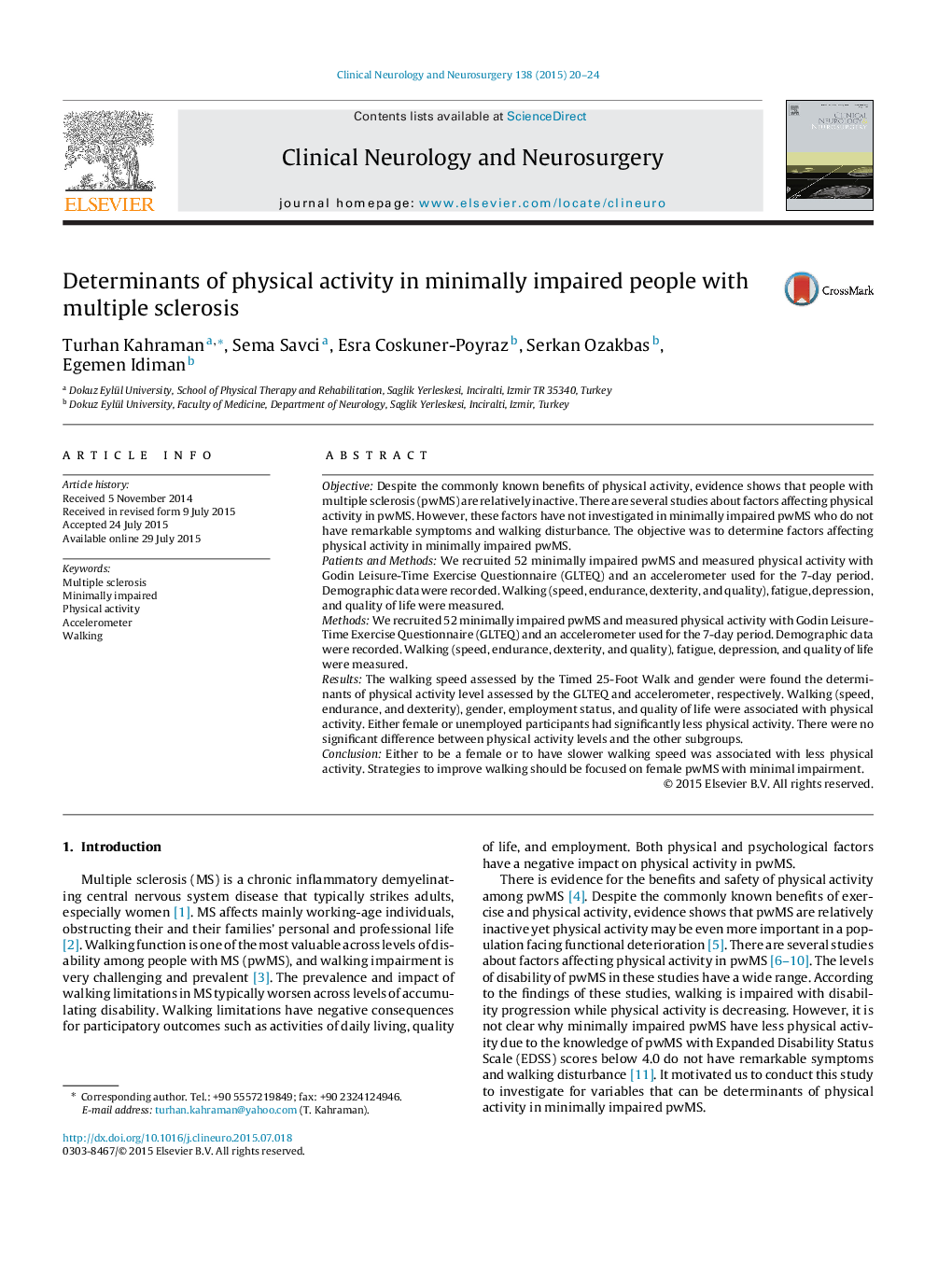| Article ID | Journal | Published Year | Pages | File Type |
|---|---|---|---|---|
| 3039719 | Clinical Neurology and Neurosurgery | 2015 | 5 Pages |
•The possible determinants of physical activity are walking speed and gender.•Female people with multiple sclerosis have less physical activity.•Slower walking speed is associated with less physical activity.•More physical activity is associated with being an employee.
ObjectiveDespite the commonly known benefits of physical activity, evidence shows that people with multiple sclerosis (pwMS) are relatively inactive. There are several studies about factors affecting physical activity in pwMS. However, these factors have not investigated in minimally impaired pwMS who do not have remarkable symptoms and walking disturbance. The objective was to determine factors affecting physical activity in minimally impaired pwMS.Patients and MethodsWe recruited 52 minimally impaired pwMS and measured physical activity with Godin Leisure-Time Exercise Questionnaire (GLTEQ) and an accelerometer used for the 7-day period. Demographic data were recorded. Walking (speed, endurance, dexterity, and quality), fatigue, depression, and quality of life were measured.MethodsWe recruited 52 minimally impaired pwMS and measured physical activity with Godin Leisure-Time Exercise Questionnaire (GLTEQ) and an accelerometer used for the 7-day period. Demographic data were recorded. Walking (speed, endurance, dexterity, and quality), fatigue, depression, and quality of life were measured.ResultsThe walking speed assessed by the Timed 25-Foot Walk and gender were found the determinants of physical activity level assessed by the GLTEQ and accelerometer, respectively. Walking (speed, endurance, and dexterity), gender, employment status, and quality of life were associated with physical activity. Either female or unemployed participants had significantly less physical activity. There were no significant difference between physical activity levels and the other subgroups.ConclusionEither to be a female or to have slower walking speed was associated with less physical activity. Strategies to improve walking should be focused on female pwMS with minimal impairment.
